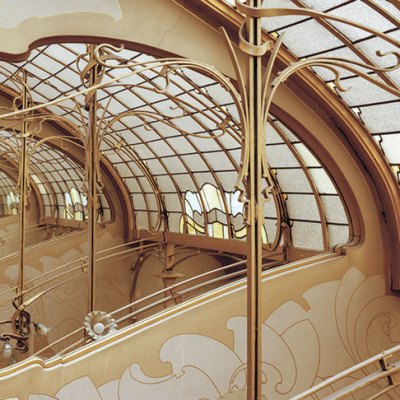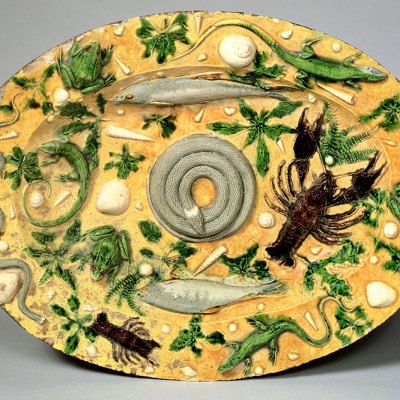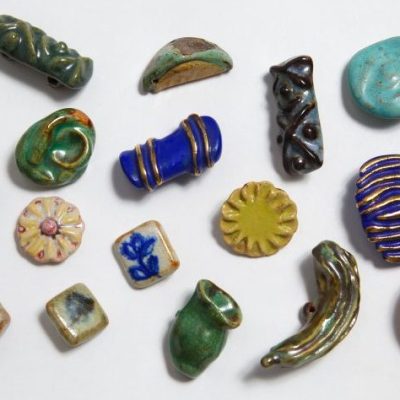From the January 2023 issue of Apollo. Preview and subscribe here.
Art nouveau was born around 1880, spread like wildfire, and by 1905 was dying. It was a new art to suit a new age of turbulent politics and rapid mechanisation. While socialists championed the value of labour and craftsmanship, entrepreneurs were eager to improve the taste of a new consumer class. Industrialists keen to display their fortunes collaborated with artists to experiment with new principles of art and design. Magazines such as Charles Holmes’s The Studio in London, Julius Meier-Graefe’s Pan in Berlin and Dekorative Kunst in Munich enabled ideas to flow between the Arts and Crafts movement in Britain, Jugendstil in Germany and the Netherlands, the Secession in Vienna, Antoni Gaudí’s work in Barcelona and, in Belgium and France, art nouveau. A network of patrons and galleries encouraged the market across Europe and the United States. Pre-eminent among them was the collector and dealer Siegfried Bing, who founded his influential gallery Maison de L’Art Nouveau in Paris in 1895. When Bing died in 1905, a tide seemed to turn, and the decline of the movement was complete by the time of the First World War. The reasons for what the art historian Paul Greenhalgh has called the ‘strange death’ of the movement are many; chief among them are the internal contradictions that were bound to affect such a broad movement.
In 30 years, however, it produced an extraordinarily diverse range of works. Ceramics, in particular, flourished through the determination of avant-garde potters that their vessels should be regarded as works of art. The pioneers of this development in France were Jean-Joseph Carriès, Ernest Chaplet, Théodore Deck and Auguste Delaherche, who worked at the potteries of Sèvres and Haviland & Co. Influenced by Félix Bracquemond, they embraced the Japanese appreciation of irregularities in form and glaze, giving new liveliness to both hand-crafted and manufactured pieces. In 1885, Chaplet succeeded in replicating the highly regarded Chinese red glaze, sang de boeuf. Following his lead, Pierre-Adrien Dalpayrat created highly varied, sculptural forms with luscious red, green and blue glazes. Others were inspired by botanical forms; they include Louis Majorelle, Émile Gallé and Émile Grittel, Léon Kann, Taxile Doat and Hector Guimard (who famously designed the entrances for the Paris Metro). In Belgium, the designer Henry van de Velde, painter Omer Coppens, sculptor Arthur Craco and painter Alfred William Finch were among the artists who began to experiment with pottery.
Fiona Baker, a specialist at Bonhams, says that each European nation evolved its own art nouveau style in ceramics. For the French, the glazes were important, whereas in Scandinavia art nouveau pieces are very pale and delicate. Works produced by the Amphora company, one among many in the kaolin-rich Turn-Teplitz region of Bohemia, are distinguished by their fine designs and the use of a distinctive yellowish ‘ivory porcelain’, resistant to firing at high temperatures. Art nouveau pottery from the Hungarian manufacturer Zsolnay, meanwhile, is valued especially for the shiny ‘eosin’ glazes. Baker notes that it is hard to make any generalisations about the market: ‘People today have much broader tastes than in the past, and may collect across glass, ceramics and other media.’ Collectors tend to be drawn however to the productions of their own nation, she suggests – an idea that was perhaps borne out by the spectacular result of £31,800 at Bonhams London on 29 November for a ‘Seahorse’ sculpture of 1902–12, cast in stoneware by Mark V. Marshall for Doulton Lambeth.
Oscar Graf, a dealer with galleries in London and Paris, reports that there is a competitive market for the best pieces of French art nouveau. Condition is paramount among private collectors; provenance is also important. Among other pieces, Graf currently has available two vases designed by Georges Hoentschel that may have been made by Grittel for Hoentschel’s stand at the 1900 World Trade Fair: ‘Anything that comes out of that room deserves to be in a museum,’ Graf says. Each is priced at more than €100,000.
Thomas Deprez in Brussels suggests that ‘Belgian art nouveau ceramics are quite rare and are among the first in the world. They have a radical style, drawing on medieval precedents.’ Strongly influenced by the Japanese aesthetic of wabi-sabi, Alfred William Finch, ‘a founding member of the avant-garde group Les XX,’ embraced imperfection. ‘Internationally there is big demand for his work,’ Deprez says. ‘He had a huge influence.’ Today his prices range from €1,000 to €7,000. Deprez will offer a large decorative vase, partly fired in open flames, for €8,000 at BRAFA in Brussels (29 January–5 February), alongside work by Coppens and Craco.
However, Marc Heiremans reflects that while the market for art nouveau ceramics burst back into life in the 1960s, today it has stagnated; he suggests that the market is dominated by decorative pieces that are not necessarily the most artistically interesting. He will show at BRAFA a bust of a young girl in glazed earthenware of c. 1898 by Arthur Craco, priced at €6,000–€8,000: ‘I like the quality, the spirit. But his market is a very intellectual market.’ Florian Kolhammer, based in Vienna, deals in pieces produced by the Wiener Werkstätte, of which, he says, ‘the figurative works of Gudrun Baudisch and Vally Wiesel-thier are the most sought-after’. He also offers work from the manufacturers Ernst Wahliss and the Amphora Porcelain Works of Riessner, Stellmacher and Kessel. ‘Both factories,’ Kolhammer says, ‘have big international collectors and are highly sought after on the art market.’ He notes renewed interest in works by Wahliss and from the Amphora factory in the last 10 years: ‘The works by Amphora have two series that are highly sought after. There are the (sea) monster vases and the portrait vases. Both have avid collectors in France, Belgium, Great Britain and the US.’ He will bring to BRAFA a monumental portrait vase by Amphora ‘in an incredibly well preserved condition’ (priced at €11,500) along with pieces by Nikolaus Kannhäuser and Paul Dachsel.
Paul Arthur, author of French Art Nouveau Ceramics: An Illustrated Dictionary (2015) and an associate of the specialist dealer Robert Zehil, comments: ‘French ceramics perhaps attract the most perspicacious buyers, as they recall the gaiety and optimism of the Belle Époque.’ He points to the work of Dalpayrat and Clément Massier: ‘The works of Dalpayrat, for instance, have formed a keystone in Peter Marino’s collecting, whilst splendid Massiers have been amassed by an Australian collector.’ Prices range from the low thousands to around €50,000 at auction, although, as Arthur points out, ‘exceptional pieces can go well above €50,000’. A vase made by Chaplet, decorated by Paul Gauguin, sold at Christie’s New York for $137,500 in 2019. Arthur suggests that in the current climate we are returning to an elite market that is divided between the very best museum-quality pieces and the rest. ‘Originality and rarity are the most prized requisites amongst serious and informed collectors.’
From the January 2023 issue of Apollo. Preview and subscribe here.



